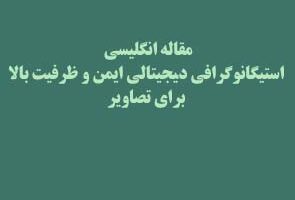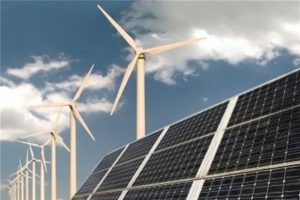آنالیز SSR براساس مدل امپدانس برای ژنراتور بادی
آنالیز SSR براساس مدل امپدانس برای ژنراتور بادی
حجم فایل : ۱٫۵۱۹KB
تعداد صفحه : ۸ صفحه
فرمت فایل : PDF
قیمت فایل : رایگان

در صورت دانلود مقاله ترجمه شده اینجا کلیک کنید
آنالیز SSR براساس مدل امپدانس برای ژنراتور بادی
Impedance-Model-Based SSR Analysis for Type 3 Wind Generator and Series-Compensated Network
Abstract
Interaction between doubly fed induction generator (DFIG) Type 3 wind generators and series-compensated networks can lead to subsynchronous resonance (SSR) oscillations—a phenomenon
observed in the real world. In this paper, impedancebased Nyquist stability criterion is applied to analyze the SSR phenomena. Impedance models of a DFIG along with its rotorside converter (RSC) and grid-side converter, and a seriescompensated network are derived in terms of space vectors. The
DFIG impedance and the network impedance are analyzed to show the impact of wind speed, compensation level, and RSC current controller gain on SSR stability. Nyquist maps are also used to demonstrate the impact on SSR stability. Simulation studies are carried out to show SSR controller interaction. This paper successfully demonstrates that the interaction between the electric network and the converter controller is a leading cause of the SSR phenomena recently observed in wind generation grid integration.
Index Terms—Doubly fed induction generator (DFIG), impedance model, Nyquist criterion, subsynchronous resonance (SSR), wind generation.
I. INTRODUCTION
SUBSYNCHRONOUS resonance (SSR) oscillations have been observed in wind farms by the industry recently
[۱]–[۳]. The incidents can cause damage to equipment and wind farms. Hence, SSR stability evaluation has been conducted in several industry reports [4], [5]. The study conducted by ABB for ERCOT CREZ system indicates that Type 3 or doubly fed induction generator (DFIG) wind generators are especially vulnerable
to SSR instability [4]. In [3], an event that led to such phenomena was described and the recorded voltage and current waveforms with SSR oscillations are presented. A Type 3 wind farm is connected to a transmission path with two parallel lines. One line is equipped with series compensation (fixed capacitors). Due to a fault, the other line was tripped and the compensated line is radially connected to the wind farm. SSR oscillations started and aggravated.
Studies on SSR indicated that the phenomena are due to the interaction among the Type 3 induction generator and (or) power electronic converter control and the series-compensated line [3], [6], [7]. The interaction between the converter control and the series-compensated line is called subsynchronous control interaction (SSCI) in the literature. The SSR phenomenain Type 3 wind farms are considered to be not related to wind turbine torsional interaction and are mainly electrical system phenomena.
- قیمت محصول: 0 تومان
- تعداد صفحه: 8 صفحه
- فرمت: PDF
- حجم فایل: 1.519KB

 الگوریتم ژنتیک برای تخصیص توزیع شده جهت کاهش تلفات ولتاژ
الگوریتم ژنتیک برای تخصیص توزیع شده جهت کاهش تلفات ولتاژ استیگانوگرافی دیجیتالی ایمن و ظرفیت بالا برای تصاویر مبتنی بر مجموعه رنگها
استیگانوگرافی دیجیتالی ایمن و ظرفیت بالا برای تصاویر مبتنی بر مجموعه رنگها ارزیابی ظرفیت سیستم های تولید برق خورشیدی و بادی
ارزیابی ظرفیت سیستم های تولید برق خورشیدی و بادی استاندارد IEEE 802.11 برای شبکه های محلی بی سیم
استاندارد IEEE 802.11 برای شبکه های محلی بی سیم